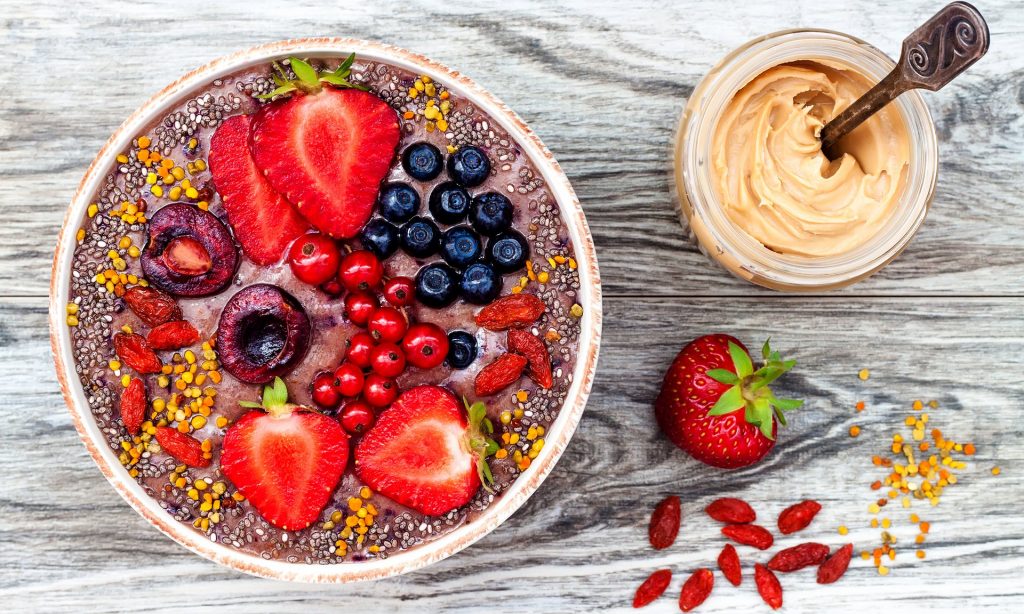
Photograph: Sveta Zarzamora/Getty Images/iStockphoto
Few lies can be told in one word, but “superfood” manages it. It is such an appealing idea: that some foods are healthy, some unhealthy and some superhealthy. Why change your habits, when you can correct them by adding goji berries? Why settle for boring old good health, when chia seeds on your cereal can make you superhealthy? Little wonder that 61% of British people reported buying foods because they were supposed superfoods, according to a 2014 survey conducted by YouGov for Bupa.
Of course, there is always science talk, of omega-3s and glucosinolates and anthocyanins. Many of us may feel we understand the value of antioxidants that “mop up” the free radicals that damage our cells, causing ageing and cancer. Yet in 2011, the European Food Safety Authority (Efsa) reviewed the evidence and found no actual benefit to health. Indeed, as Ben Goldacre pointed out in his book Bad Science, the body actually uses free radicals to kill bacteria. Does that mean a surfeit of antioxidants might weaken your immune system? The point comes when you have to give up and ask a doctor. (A real one, not Gillian McKeith.)
The truth – so unappealing – is that nutrition is fabulously complex, different for everybody and mostly mysterious. We know that if you eat a balanced diet with plenty of fruit and vegetables and do regular exercise, nothing is a superfood. And if you don’t, no superfood will save you.
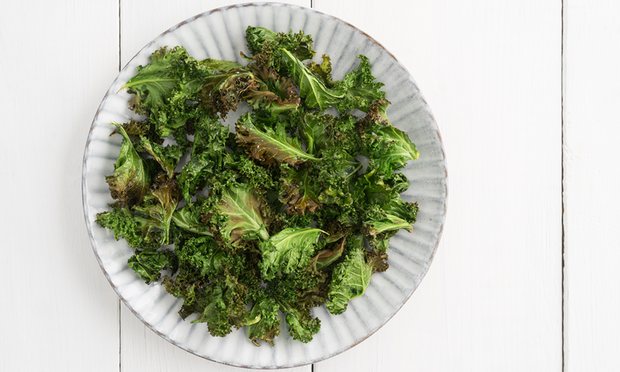
Currently one of the coolest superfoods around, kale is also one of the most perplexing. Isn’t it just one of the “greens” people have been told to eat for about as long as they have had a choice? Certainly, you would struggle to find a less exotic vegetable. Kale has grown in northern Europe, and plenty of other places, for thousands of years. In wartime, it was one of the stolid, practical crops that people were advised to grow in their gardens. Along with cavolo nero and red Russian kale, it is one of many cultivars of the magnificent Brassica oleracea species, which also gives us cabbage, broccoli, cauliflower, kohlrabi and brussels sprouts, and is closely related to turnips, bok choy and Chinese cabbage.

Photograph: jenifoto/Getty Images/iStockphoto
Health benefits Well, we know that it is healthy to eat a diet containing plenty of vegetables, so really the question ought to be: is kale significantly better than the rest of them? And that is easy. No, it isn’t. Fans of superfoods like to list the things that kale contains a lot of (iron, vitamins, fibre, antioxidants) and point out what those things do (make red blood cells; miscellaneous; help you poo; “mop up free radicals”/don’t know), but that doesn’t mean your body gets superpowers if you eat more than you need, especially if you’re already getting enough from other sources. It’s like trying to make your car go faster by putting in more petrol. All vegetables contain different amounts of vitamins and minerals, which also vary depending on the soil they are grown in, so there is not much point making them compete in a nutrient competition. Sure, by weight, typical kale contains more calcium, vitamin B6 – and indeed calories – than typical cabbage, broccoli, brussels sprouts, spinach or carrots, but eating more of them will get you to the same place. Typical kale also contains less vitamin A than carrots, less iron, magnesium or potassium than spinach and less fibre than brussels sprouts. Big deal. No good evidence shows that eating plenty of fruit and vegetables with kale is any better than eating plenty of them without.
Eco rating Close to perfect – you can grow it easily yourself (under a net to keep off the cabbage white butterflies).
Hipster rating Sky-high.
Stars in Crispy chips, colcannon, not-very-nice salads.
Avocado
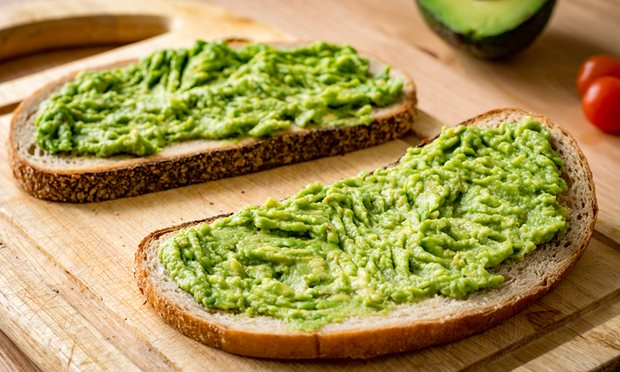
A true delicacy, when just ripe, and now one of the most popular fruits in the US. (It is technically a fruit rather than a vegetable. Very technically, it’s a large berry.) So high is the demand for avocados, in fact, that the crop has recently caught the attention of Mexico’s criminal gangs. To look at, use, and taste – and, indeed, in its nutritional content – avocado is certainly unusual. Whether it has superpowers is another matter.
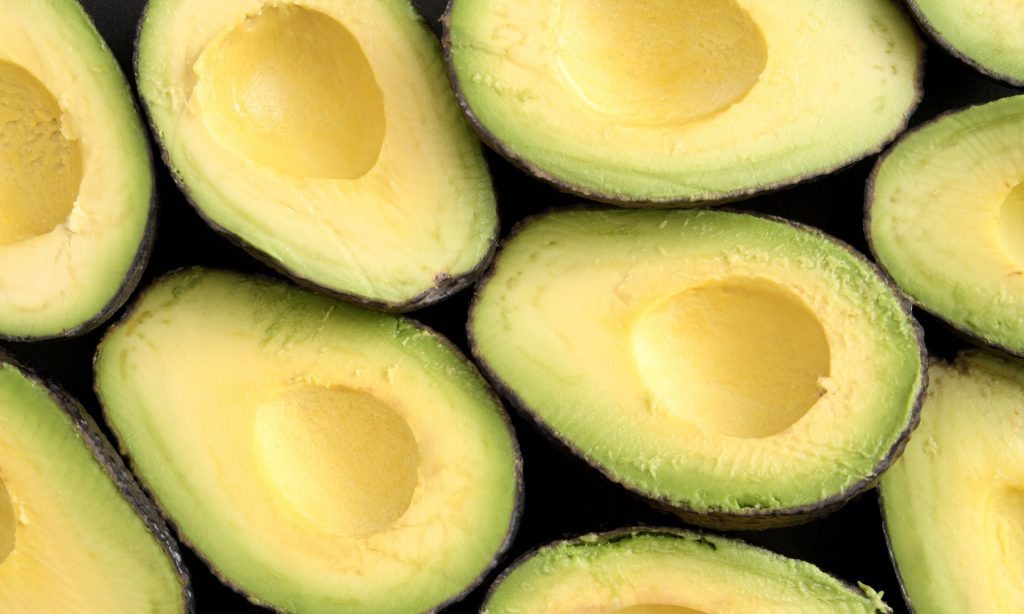
Photograph: FotografiaBasica/Getty Images
Health benefits The high fat content stands out immediately. It is monounsaturated fat, which helps to protect your cardiovascular system, but you can also get that from oily fish, nuts, uncooked olive oil, sunflower oil … loads of things. And you should. As result, despite seeming so light and barely filling you up at all, avocados are hugely calorific. A whole one provides about 240 calories. (A Mars Bar provides 228.) An excellent way of getting fat by mistake is to go on a misguided avocado binge. A review of eight preliminary studies in 2013 found that eating hass avocados may benefit the cardiovascular system. However, this is far from established and, more importantly, the review was paid for by – who else? – the Hass Avocado Board. Currently, there are no good-quality independent systematic reviews of the effects of avocados on health. There have been reports that an extract of avocados might treat leukaemia, but the extract in question – avocatin B – comes from the seed in the middle, so you’ll get none from eating it.
Eco rating Not good, I’m afraid. Deforestation to make way for avocado trees is now a problem in Mexico. Even those trees that already exist need a very large amount of water – perhaps as much as 272 litres for every half-kilo of fruit (two or three avocados). In California, where there is a long-term water shortage, this is an even more serious problem. On top of all this, avocados are heavy, have to be shipped from the tropics and kept cool en route.
Hipster rating Low. So predictable.
Stars in Guacamole, avocado toast, milkshakes, ice-cream, prawn cocktail (don’t knock it).
Pomegranates
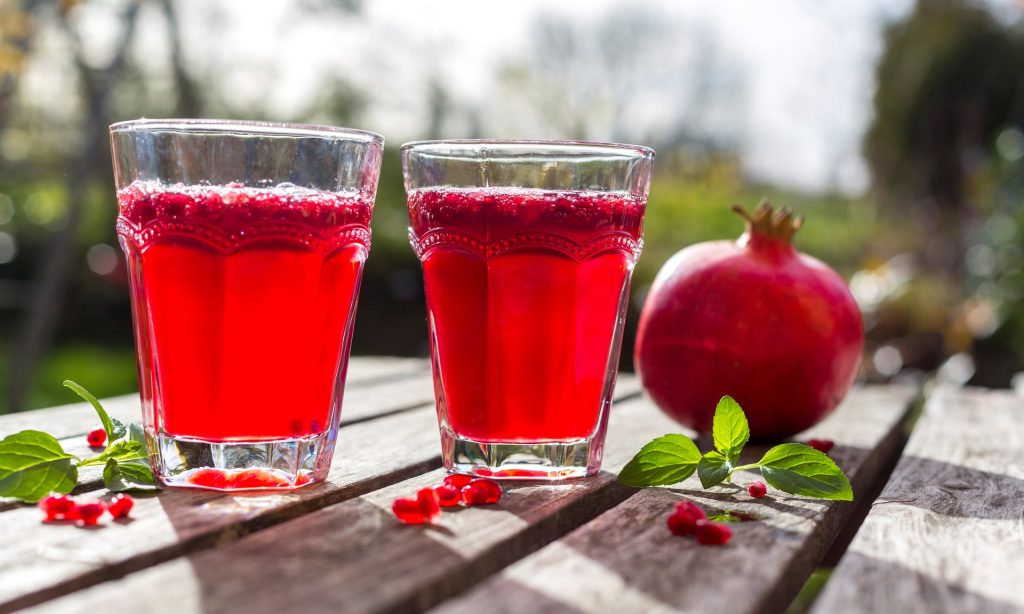
Photograph: Westend61/Getty Images
Pink, sweet, tasty and a little bit exotic, pomegranates are an easy fruit to like – especially when someone has already juiced them for you and removed the seeds (which contain all the fibre, by the way). Grenadine, the red syrup you last saw at the bottom of a tequila sunrise in 1992, was traditionally made from sweetened pomegranate juice. It is often replaced with less expensive fruit these days, since no one really notices.
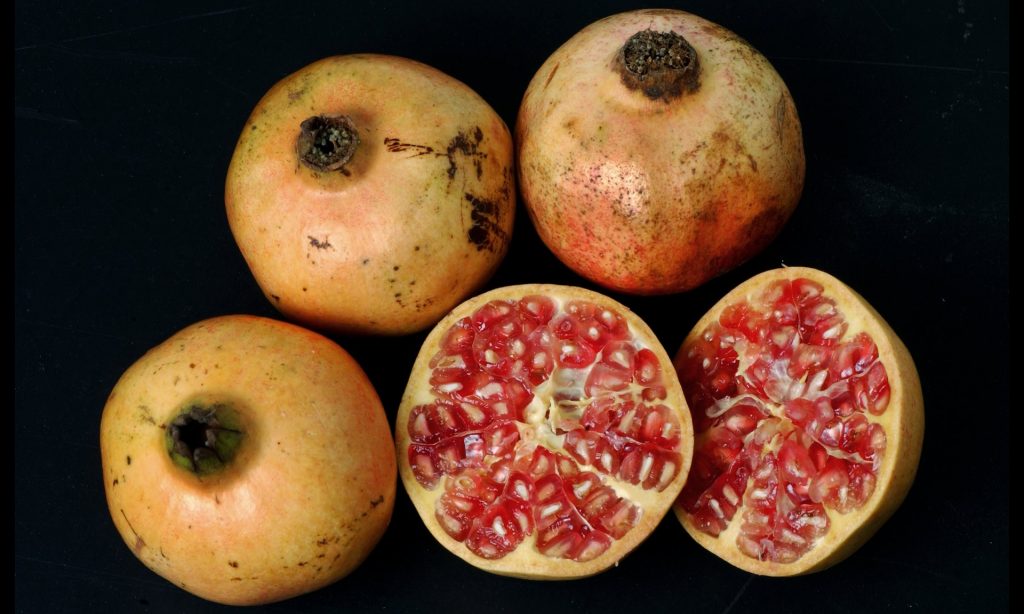
Photograph: Sarah Lee for the Guardian
Health benefits In 2012, a US judge ordered POM Wonderful to stop making bold health claims for its products. As things stand, studies only hint at benefits for people with existing health problems. It has been suggested that drinking lots of pomegranate juice might help to reduce the artery damage caused by cholesterol and improve blood flow to damaged hearts, but the evidence is neither decisive nor well understood. There is also a very faint suggestion that it may slow the progress of prostate cancer. You will not be surprised to hear that there are lots of antioxidants in pomegranates (especially in the peel, which you can’t eat), but that means exactly nothing until large doses of antioxidants, per se, are shown to improve people’s health.
Eco rating Pomegranate trees grow easily in hot places and manage well with limited water. Even so, the rush to get into the pomegranate business has left many central Indian farmers in trouble after years of inadequate rain.
Hipster rating Low, now that you can get it in washing-up liquid. Pomegranate molasses, which is basically sugar, is very cool.
Stars in Juice, couscous, and Persian, Indian and Pakistani stews.
Goji berries
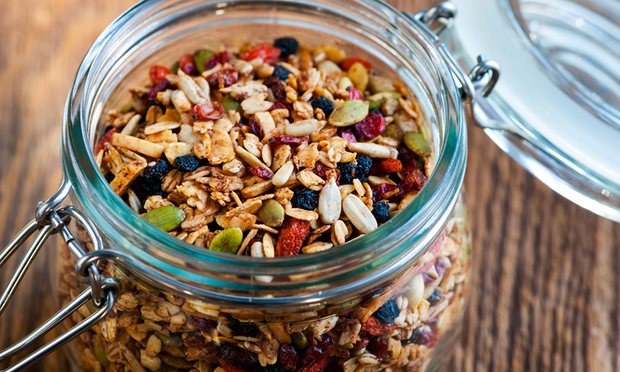
Once known as wolfberries, this fruit of the boxthorn has become highly prized, and fairly expensive, under its sort-of Chinese name. When fresh, the fruits look like pink, elongated grapes. When dried, they look like pink raisins. As such, they are very easy to snack on and mix into things. The Chinese herbalist Li Ching-Yuen was said to have lived for 197 (or even 256 years) on a diet high in goji berries, but didn’t.

Photograph: Alamy
Health benefits Goji berries have played a big part in traditional Chinese medicine for thousands of years, but don’t take that as an endorsement. The best evidence suggests that traditional Chinese medicine, like traditional European medicine, was and is mostly a reassuring waste of time or actually harmful. Eating goji berries, or drinking the juice, almost certainly isn’t bad for you, but there is simply no evidence that they do anything more useful than any other fruit. Studies claiming they treat cancer, heart disease and various other things have been tiny, badly run and generally based on large doses of goji extract that you couldn’t possibly get by eating them normally.
Eco rating Fine. You can even grow your own, although most are shipped from China.
Hipster rating Good, especially if you can talk about how you grew them.
Stars in Juice, granola.
Chia seeds

An obscure Central and South American seed with an ancient history and a weirdly high omega-3 content: chia seeds were destined to become a superfood long before anyone knew what, if any, good they did. They also behave quite excitingly in the kitchen, forming a gloopy kind of gel when mixed with liquids, which means you can use them to thicken drinks or even make strange jellies. Otherwise, you can scatter them on almost anything or grind them into a flour to bake with. They don’t taste of very much.
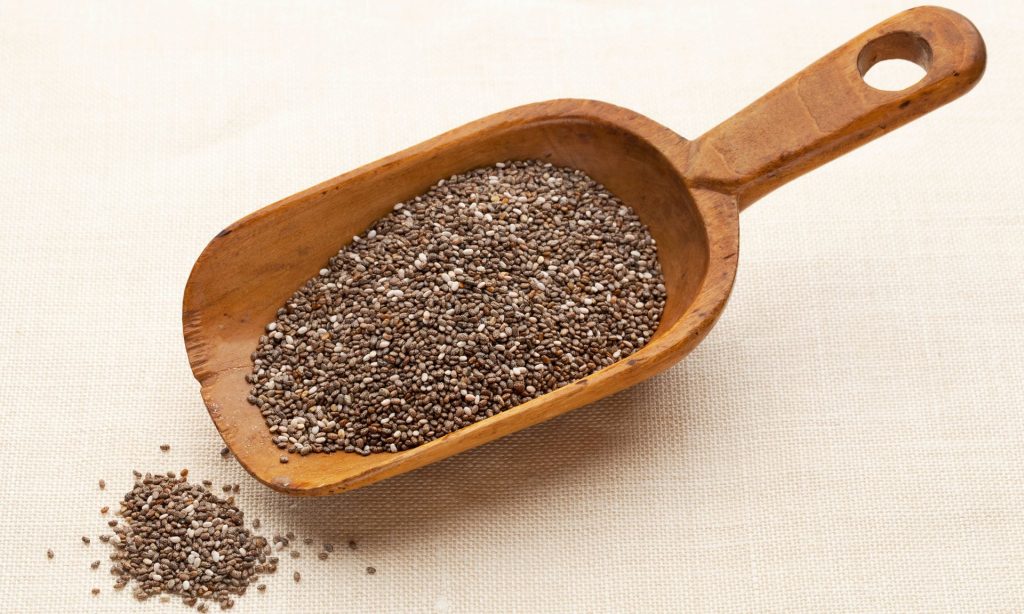
Photograph: Marek Uliasz/Alamy
Health benefits Chia seeds are all about the small print. Omega-3 fatty acids, in case you hadn’t heard, are found in oily fish, and a broadly Mediterranean diet including oily fish seems to be a very healthy way to eat. One hundred grams of chia seeds contain about 17g of omega-3s, which is enormous – about eight times as much as salmon. However … the omega-3s in chia are different from the ones in fish, and your body turns the chia kind into the fish kind very inefficiently, meaning that you will actually absorb less, by weight – about 1.8g per 100g, compared with 2.3g. Nor is it easy to eat a full 100g of chia seeds, which, by the way, also contain 486 calories, almost as much as a Big Mac. And however part two: why do you want to eat lots of omega-3s? Fish is definitely good for you, helping to protect against cardiovascular disease. (The government recommends two portions, one oily, a week.) But the evidence for omega-3s from other sources is vague, and there is little evidence to suggest health benefits for chia in particular.
Eco rating Certainly an ecological improvement on fish, if you’re determined to get omega-3s from somewhere.
Hipster rating Getting a bit passé now.
Stars in Bread, granola bars, smoothies, weird jelly.
Beetroot
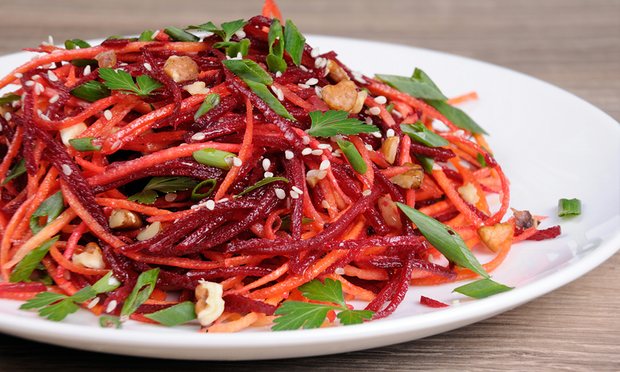
Not long ago, beetroot was a relic. You would see mushy spheres of it sealed in plastic, maybe soaked in vinegar. Only old people still had a taste for beetroot, like condensed milk or tongue. Now, like so many relics, it is cool again, and deserves to be. Freshly roasted, or grated, or pickled (carefully), or juiced, it is one of the great vegetables. You can eat the leaves, which are basically chard, and the classic purple beetroot has the jolly side-effect of dyeing you, your plate, your kitchen and your excreta red for the rest of the day.

Health benefits As vegetables go, beetroot is a fairly unspectacular source of vitamins and minerals. (Not that this matters. See kale.) Yet, like many vegetables, it is rich in nitrates, which somehow manage to make it a superfood, a sports supplement and a health scare, all at the same time. The good part is that beetroot juice does seem to lower blood pressure, a little, probably because of the nitric oxides that your body converts nitrates into. In practice, this is is not much use, however. If your blood pressure needs to be lowered, you are much better off doing exercise, eating less salt and taking the drugs your doctor gives you. Other research suggests that drinking beetroot juice before exercise improves the endurance of casual athletes by allowing more oxygen to be delivered around the body (but has little effect on serious ones). When added to red meat, however, nitrates worry people, as they form nitrosamines, and do lead to an increased risk of bowel cancer (from about a 5.6% lifetime risk in people who eat almost none, up to about 6.6% in people who eat lots). It is possible that the nitrates in beetroot could also form nitrosamines in your body, so Efsa recommends eating no more than about two beetroots a day.
Eco rating Excellent. Grow it yourself.
Hipster rating High, given its traditional unpopularity.
Stars in Everything. Salt-baked slabs with cheese, pickled in a jar, julienned in a salad, juiced for breakfast … You can even make beetroot cakes, or turn puddings pink with the dye.
Seaweed
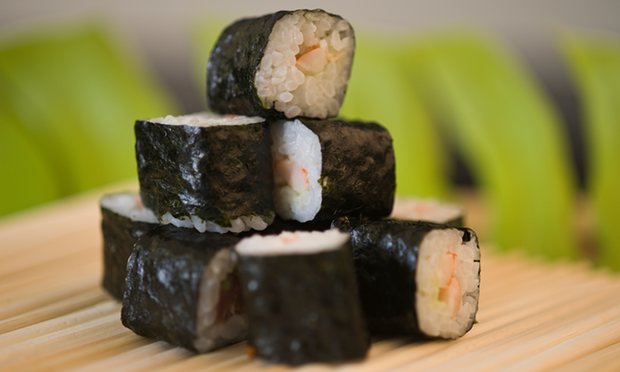
Seaweed is definitely having a moment right now. It plays a big part in east Asian food, especially in Japan, and also crops up in the Philippines and in Welsh laverbread which, in case you’ve never tried it, is very unlike bread. Given its weirdness to those not used to eating algae, it is surprising that seaweed hasn’t had its moment sooner. It comes in many edible forms – laver or nori (they are similar), kelp, sea grapes, dulse and plenty more. All are different, and some have special claims attached to them, but it is possible to generalise a bit.

Health benefits Brace yourself, because seaweed is a rare example of a non-animal product that is rich in vitamin B12, which makes it an important food for vegans who don’t want to take supplements. Thus, for this small group of people who choose to have a nutrient deficiency, but hate pills, seaweed is a kind of superfood. For everybody else, however, it is just tasty and healthy (as part of a balanced diet). Yes, seaweed generally contains a lot of calcium and iron, but you should be getting those from a variety of sources anyway. Plus – and this is a big problem with superfoods – eating more of one mineral than your body needs may stop it properly absorbing something else. The iodine, fibre and alginate in seaweed have been promoted for weight loss, but the effect, if there is any, is far from proven. Besides, iodine is another thing you don’t want to eat too much of. Iodine toxicity can cause thyroid problems and weight gain. Depending on where it grew, some seaweed may even contain a lot of heavy metals, which – in large quantities – could do you actual harm.
Eco rating In some places, such as the Philippines and Tanzania, mangroves have been chopped down to make way for seaweed farming. On the other hand, seaweed farms may create good habitats for other species. On balance: fine.
Hipster rating Cool as hell, especially if you seem to know anything about it.
Stars in Dashi, laverbread, sushi.
Source: the British Dietetic Association

